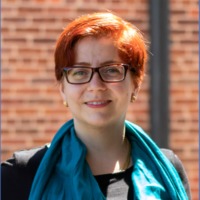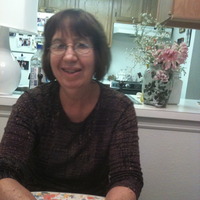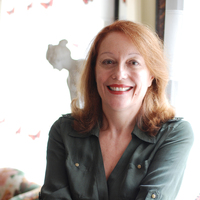Papers by Ariadna Solé Arraràs
Podeu consultar la versió en urdú a: http://hdl.handle.net/11703/11122
Tener buena salud es una condicion necesaria para que los musulmanes puedan cumplir el ayuno pres... more Tener buena salud es una condicion necesaria para que los musulmanes puedan cumplir el ayuno prescrito durante el mes de Ramadan. Sin embargo, definir exactamente «sano» no resulta facil. Mas aun en un contexto de diaspora como el de los musulmanes en Cataluna, donde a las controversias propias se anade la diferente percepcion de los profesionales sanitarios catalanes. Estos aparecen como una nueva autoridad que, al lado de las religiosas, tiene algo que decir sobre quien debe y quien no debe seguir el ayuno.
La Casamance souffre d’un certain enclavementpar rapport au reste du Senegal.Cet isolement est du... more La Casamance souffre d’un certain enclavementpar rapport au reste du Senegal.Cet isolement est du a son eloignement descentres economiques du pays, a une repartitiondiffuse et heterogene de la populationsur son territoire, ainsi qu’a un reseauroutier insuffisant. Recemment, le gouvernementsenegalais a mis en place une seried’infrastructures pour desenclaver la zone,des changements qui devraient favoriser lamobilite de la population et qui pourraientaussi avoir des effets positifs sur le plan economiqueet politique. Nous analyseronscomment l’isolement de la Casamance etles recents changements affectent la mobilitede la population et le rapatriement desdefunts vers leur derniere demeure.

espanolEste texto plantea una aproximacion bibliografica a las manifestaciones de la movilidad po... more espanolEste texto plantea una aproximacion bibliografica a las manifestaciones de la movilidad post mortem. A lo largo de la historia se encuentran diferentes ejemplos que han querido responder a lo que supone encontrar la muerte “lejos de casa”, y que proponen las acciones necesarias para corregir esta ausencia de los difuntos en las ritualidades funerarias, y procurar que sus cuerpos pudieran reposar cerca de sus familiares. Se crea un deber solidario entre los miembros de los colectivos a los que aquellos pertenecian, lo que supone la reapropiacion de los cuerpos de los difuntos en terminos de pertenencia. El texto analiza estos procesos y sugiere futuros terrenos de investigacion dentro del ambito de la antropologia de la muerte. EnglishThis text presents a bibliographic approach to manifestations of post-mortem mobility. Throughout history there have been many examples of responses to meeting death “away from home”, proposing the necessary actions to correct the absence of the ...
This article analyses Islamic rituals in Catalonia (Spain), such as Ramadan�s fasting or the Feas... more This article analyses Islamic rituals in Catalonia (Spain), such as Ramadan�s fasting or the Feast of the Sacrifice (Id al-Adha). In a context of diaspora, these rituals tend to be redefined and recontextualised, as collective ritual expressions that reflect how Muslims try to find its place in European societies. According to Baumann (1992), we want to stress the connective component included in these rituals to embrace people and issues that do not nominally belong to the group. Inside plural societies, the expression of rituals is part of the search for public recognition.
Revista Andaluza de Antropología, 2021
The effects of the pandemic have plunged Spanish society in a situation of collective death not e... more The effects of the pandemic have plunged Spanish society in a situation of collective death not experienced for decades. In addition to the saturation of medical services, excess mortality also caused a situation of collapse in funeral services. The impossibility of carrying out funeral ceremonies, or the restriction of attendance, has placed an additional emotional burden on families who have had to suspend their mourning. In this article, we will apply Gaëlle Clavandier’s notion of “collective death” to analyse the commemorative actions carried out by public administrations, paying tribute to the victims of the pandemic.
nadiesinfuturo.org
En la ya abundante bibliografía académica sobre los procesos migratorios elaborada en España, sig... more En la ya abundante bibliografía académica sobre los procesos migratorios elaborada en España, siguen existiendo lagunas temáticas que requieren una mayor atención analítica. Una de estas clamorosas ausencias se relaciona con las prácticas rituales, escasamente ...

Diversité urbaine, 2018
Cemeteries become social spaces where many symbolic meanings converge both in their material and ... more Cemeteries become social spaces where many symbolic meanings converge both in their material and immaterial dimensions, and perhaps above all, in their expression of communities and their construction of identities and otherness. This article explores how religious diversity has found its place within Spanish cemeteries. Although this debate is linked to contemporary immigration and the religious groups it has brought, religious diversity has challenged Spanish funerary customs for a long time. As we will argue in this article, the debates around where to put the “other dead” are an inherent part of funerary heritage in Spain. By looking at four spaces dedicated to the burial of non-Catholics who died in Spain, we will attempt to show how some symbolic and identity-based constants related to the separation of graves persist today and how Spanish society is opening up to considering burial spaces as part of a common heritage.
Revista d'etnologia de …, 2010

Diversité urbaine
Cemeteries become social spaces where many symbolic meanings converge both in their material and ... more Cemeteries become social spaces where many symbolic meanings converge both in their material and immaterial dimensions, and perhaps above all, in their expression of communities and their construction of identities and otherness. This article explores how religious diversity has found its place within Spanish cemeteries. Although this debate is linked to contemporary immigration and the religious groups it has brought, religious diversity has challenged Spanish funerary customs for a long time. As we will argue in this article, the debates around where to put the “other dead” are an inherent part of funerary heritage in Spain. By looking at four spaces dedicated to the burial of non-Catholics who died in Spain, we will attempt to show how some symbolic and identity-based constants related to the separation of graves persist today and how Spanish society is opening up to considering burial spaces as part of a common heritage.

Migraciones, 48, 2020
Las mujeres migrantes y musulmanas se enfrentan a una imagen estereotipada de amas de casa y suje... more Las mujeres migrantes y musulmanas se enfrentan a una imagen estereotipada de amas de casa y sujetas pasivas en sus procesos de incorporación a la sociedad receptora, que asume su invisibilidad en el mercado laboral como un atributo intrínseco y "natural". El presente artículo pretende cuestionar esta imagen y arrojar luz sobre los procesos de agencia en el ámbito de la econo-mía productiva y reproductiva del colectivo de mujeres de origen pakistaní en Barcelona. En particular, se examinan los obstáculos de carácter estructural y cultural que las mujeres experimentan pa-ra acceder al mercado laboral, así como las estrategias de agencia y empoderamiento que despliegan para sortearlos. A partir de dos investigaciones recientes centradas en este colectivo, los resultados muestran cómo la agencia se encuentra imbricada ("embedded") (Khurshid, 2015) en los constreñimientos estructurales de la so-ciedad receptora, así como en el sistema de valores e ideologías de género patriarcales de la comunidad pakistaní.
Palabras clave: género; agencia; empoderamiento; migración pakistaní.
Resumen: Tener buena salud es una condición necesaria para que los musulmanes puedan cumplir el a... more Resumen: Tener buena salud es una condición necesaria para que los musulmanes puedan cumplir el ayuno prescrito durante el mes de Ramadán. Sin embargo, definir exactamente «sano» no resulta fácil. Más aún en un contexto de diáspora como el de los musulmanes en Cataluña, donde a las controversias propias se añade la diferente percepción de los profesionales sanitarios catalanes. Estos aparecen como una nueva autoridad que, al lado de las religiosas, tiene algo que decir sobre quién debe y quién no debe seguir el ayuno.
Panel I. Espacios de/para la interculturalidad: Contacto, tránsito, apropiación.
Palabras clave: ritual funerario, inmigración, Senegal, diáspora, islam. Resumen: el cuerpo del d... more Palabras clave: ritual funerario, inmigración, Senegal, diáspora, islam. Resumen: el cuerpo del difunto continúa tras la muerte su "vida social" . El retorno al país de origen de los cadáveres de los senegaleses difuntos en Catalunya permite la visión de su cuerpo, a través de la cual el finado cumple simbólicamente su retorno. La visión del cuerpo se presenta, pues, como un bálsamo al dolor para aquellos que han perdido a alguien en una tierra lejana. Si a menudo la cuestión de la preferencia del enterramiento en el país de origen por parte de los migrantes musulmanes en Europa se presenta como un problema ligado a los debates sobre diversidad religiosa, el elemento emocional en relación al regreso al lugar de origen aparece como una dimensión que es necesario explorar más profundamente.
Books by Ariadna Solé Arraràs
Conference Presentations by Ariadna Solé Arraràs

Since its first appearance in the academic sphere in the 90s, the concept of Islamophobia has bee... more Since its first appearance in the academic sphere in the 90s, the concept of Islamophobia has been the object of a great debate with regards to its appropriateness, as opposed to others such as that of anti-Muslim racism, and similarly whether it refers to a new or rather an old phenomenon.
In fact it was Fred Halliday who shed the most serious critique of the concept in 1999. Focusing his critique mainly on the conceptualization that The Runnymede Fund had put forward, his objection was that the main object of the prejudice was the subjects, the Muslims, as opposed to Islam as a religion. Similarly, he argues, that Islamophobia supposes a historic continuity with pre-modern beliefs, while for him we are rather faced with a contemporary phenomenon. This leads him to abolish the concept of Islamophobia, and instead he speaks about hostility towards Muslims (focus on the subjects).
Another critique of the concept regards the phobia part of the concept. It is in fact the same kind of critique that has been shed against other concepts such as xenophobia, and the like: Instead of focusing on the social characteristics of the phenomenon, it somehow relegates the problem to the psychological sphere, as something pathological and fundamentally individual.
Although by and large we agree on these critiques, and as a matter of fact a part of our research tends to underscore these critiques, we believe that instead of throwing out the baby with the bathwater, we should consider whether these two concepts might be different but complementary. Actually, we believe that the misunderstanding lies in the different traditions in with which the authors operate, as well as their point of view in an epistemological sense.
The main objective of this communication is to analyse the findings of recent study we have carried out on Islamophobia in Catalonia (Spain), in relation to these more general theoretical debates, in order to see how the different terms are challenged, revised, and fundamentally whether the distinction makes sense and how so?
This research shed light on how both these discourses operate in Catalan context, and on how Muslims themselves perceive and categorize the discrimination they suffer.
From this we propose to understand anti-Muslim racism and Islamophobia as two complementary concepts which refer to two different scales of a complex modern phenomenon.











Uploads
Papers by Ariadna Solé Arraràs
Palabras clave: género; agencia; empoderamiento; migración pakistaní.
Books by Ariadna Solé Arraràs
Conference Presentations by Ariadna Solé Arraràs
In fact it was Fred Halliday who shed the most serious critique of the concept in 1999. Focusing his critique mainly on the conceptualization that The Runnymede Fund had put forward, his objection was that the main object of the prejudice was the subjects, the Muslims, as opposed to Islam as a religion. Similarly, he argues, that Islamophobia supposes a historic continuity with pre-modern beliefs, while for him we are rather faced with a contemporary phenomenon. This leads him to abolish the concept of Islamophobia, and instead he speaks about hostility towards Muslims (focus on the subjects).
Another critique of the concept regards the phobia part of the concept. It is in fact the same kind of critique that has been shed against other concepts such as xenophobia, and the like: Instead of focusing on the social characteristics of the phenomenon, it somehow relegates the problem to the psychological sphere, as something pathological and fundamentally individual.
Although by and large we agree on these critiques, and as a matter of fact a part of our research tends to underscore these critiques, we believe that instead of throwing out the baby with the bathwater, we should consider whether these two concepts might be different but complementary. Actually, we believe that the misunderstanding lies in the different traditions in with which the authors operate, as well as their point of view in an epistemological sense.
The main objective of this communication is to analyse the findings of recent study we have carried out on Islamophobia in Catalonia (Spain), in relation to these more general theoretical debates, in order to see how the different terms are challenged, revised, and fundamentally whether the distinction makes sense and how so?
This research shed light on how both these discourses operate in Catalan context, and on how Muslims themselves perceive and categorize the discrimination they suffer.
From this we propose to understand anti-Muslim racism and Islamophobia as two complementary concepts which refer to two different scales of a complex modern phenomenon.
Palabras clave: género; agencia; empoderamiento; migración pakistaní.
In fact it was Fred Halliday who shed the most serious critique of the concept in 1999. Focusing his critique mainly on the conceptualization that The Runnymede Fund had put forward, his objection was that the main object of the prejudice was the subjects, the Muslims, as opposed to Islam as a religion. Similarly, he argues, that Islamophobia supposes a historic continuity with pre-modern beliefs, while for him we are rather faced with a contemporary phenomenon. This leads him to abolish the concept of Islamophobia, and instead he speaks about hostility towards Muslims (focus on the subjects).
Another critique of the concept regards the phobia part of the concept. It is in fact the same kind of critique that has been shed against other concepts such as xenophobia, and the like: Instead of focusing on the social characteristics of the phenomenon, it somehow relegates the problem to the psychological sphere, as something pathological and fundamentally individual.
Although by and large we agree on these critiques, and as a matter of fact a part of our research tends to underscore these critiques, we believe that instead of throwing out the baby with the bathwater, we should consider whether these two concepts might be different but complementary. Actually, we believe that the misunderstanding lies in the different traditions in with which the authors operate, as well as their point of view in an epistemological sense.
The main objective of this communication is to analyse the findings of recent study we have carried out on Islamophobia in Catalonia (Spain), in relation to these more general theoretical debates, in order to see how the different terms are challenged, revised, and fundamentally whether the distinction makes sense and how so?
This research shed light on how both these discourses operate in Catalan context, and on how Muslims themselves perceive and categorize the discrimination they suffer.
From this we propose to understand anti-Muslim racism and Islamophobia as two complementary concepts which refer to two different scales of a complex modern phenomenon.